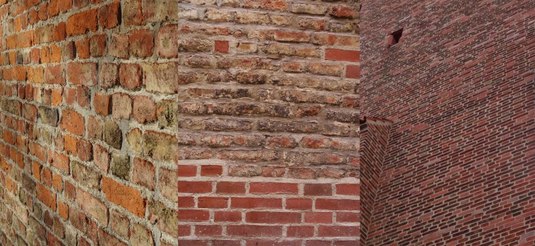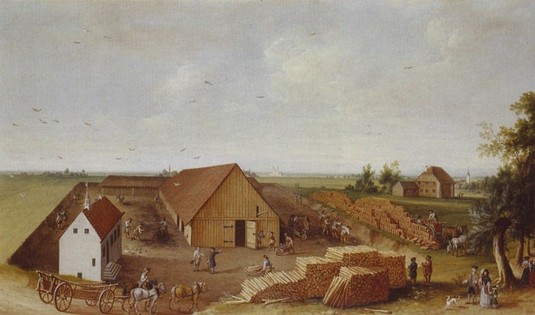The History of Munich and Its Loam
„Ohne den Lehm daat’s München net geb‘n!“
22.06.2017
Thinking about houses and buildings made out of clay bricks, it is often cities like those in northern Italy that spring to mind. Bologna, Florence, or Siena; particularly those moments when the sun sets and the city glows red and ochre with all the big churches, towers, and palazzi made out of and covered with red clay bricks and tiles. Clay bricks are Italy. Thus, such an image doesn’t really fit with Munich, our Bavarian capital north of the Alps, quite far away from Bella Italia and its red sun—at least that’s what I thought before writing this article.
While wandering around Munich, however, I suddenly realized how many of the buildings, houses, and churches here are also built out of clay bricks: for example, the cultural center Gasteig, parts of the LMU, and also the main church of Munich, the Frauenkirche. If you really start to search for clay bricks, you suddenly find them everywhere in the city—not necessarily in red, and sometimes they are plastered, but still you can see them. Starting to research this topic further, I found an interesting story behind the clay bricks that are found all around Munich. It is a story that has its origin over 100,000 years ago, resulting from Munich’s vicinity to the Alps, and it is one that affected not only Munich’s architecture but also its society and social structure over hundreds of years.

Details of clay bricks in Munich, from the Nordfriedhof (left), the Frauenkirche (center), and the Salvatorkirche (right). Photographs by author.
Because of Munich’s geographical position close to the Alps, it was affected by the glaciation of this mountain range during the Pleistocene. During the last two Glacial Periods—the Riss- and Würm-Glaciations around 130,000 and 11,000 years ago—the glacier’s moraines transported a lot of rocks, stones, gravel, and sediment from the Alps northwards, and thus formed the landscape of present-day Munich. A flat and gravelly landscape with some small hills and terraces—the so-called “Munich gravel plain”—was created. The rocks and stones that came from the calcareous Alps were easily eroded by forces like wind or rain. Wind also deposited the fine eroded sediment further north—especially to an area that is now a high terrace located between Ramersdorf and Ismaning in the eastern part of contemporary Munich. This created a thick layer of sediment on the terrace known as the loess-layer. Weathering of those sediments—the influence of temperature and, in this case especially, precipitation over the years—turned the loess into a special type of soil called loam. So, over thousands of years, a layer of loam (termed the Lehmzunge) up to four meters thick, two to three kilometers wide, and fifteen kilometers long was created in the middle of what is now Munich.
This loam layer was an enormous resource of building material and became important for the first time after a large fire in Munich in 1327, following which, in 1342, the Emperor Ludwig der Bayer mandated that all houses in the city of Munich had to be covered with clay bricks. More and more clay brickworks were built. In 1475, one could count 60 brickworks, mainly in the city districts of Haidhausen, Oberföhring, and Daglfing, which were small towns on the outskirts of Munich back then.

The brickwork on Rosenheimer Straße in Munich, with St. Michael’s Church in Berg am Laim in the background, by German painter Joseph Stephan (1770).
If you would like to read the whole blogpost, please visit the RCC´s Blog Seeing the Woods.

